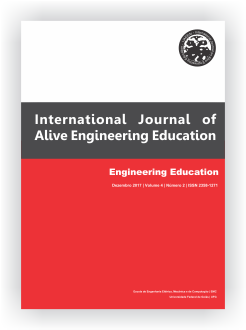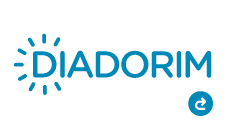Robot as Virtual Learning Object
DOI :
https://doi.org/10.5216/ijaeedu.v4i2.48137Mots-clés :
Virtual learning environment, Virtual learning objects, Virtual Lab, Remote accessRésumé
Nowadays it is notorious that technology is part of our life, and it is being drastically evolving along the years. New forms of audiovisual medias are constantly being develop, nevertheless teaching methods still reaming the same as the ones that were approached before the advances of technology. These new technologies could transform the way we teach by creating interactive platforms in practical disciplines offered in technical and engineering courses that would not only improve the quality of teaching but also would enhance students learning process and reduce costs of laboratories. In this context, this work aims to present an alternative resource in the area, a virtual learning object and virtual laboratory with remote access that increases quality of classes by creating an immersive experience that is close to reality, and allows students to actually interact and test the knowledge acquired. The main goal was to provide remote access to the automation laboratory and to safely execute practical experiments. To being with, an environment consisting of a 3D model of the ARM-7220-4 robot arm was developed, containing the majority of the robot movement functions as well as mechanical, geometric and kinematic of the real robot arm, and granting its access through Moodle platform to students of CEFET-MG – Campus Leopoldina. The hardware, are composed by a real robot ARM-7220-4 that is connect to the virtual tool, and responds to the commands sent by the student through the virtual environment, and a camera is also connected, allowing the real-time monitoring of the physical laboratory. To evaluate the work, a teaching practice was proposed, consisting on movement of the robotic arm through tasks on order to validate the knowledge acquired through bibliographic didact sources, addressing theoretical aspects. Final results of the experiments with students from the campus that have tested the complete system showed that the learning object is a promising resource for distance learning courses.
Références
J. A. Valente, Blended learning e as mudanças no ensino superior: a proposta da sala de aula invertida. Educar em Revista (2014): 79-97.
I. Mehta, K. Bimbraw, R. G. Chittawadigi and S. K. Saha, A teach pendant to control virtual robots in Roboanalyzer, 2016 International Conference on Robotics and Automation for Humanitarian Applications (RAHA), Kollam, 2016, pp. 1-6.
RoboDK, Simulation and OLP for Robots. Available: <http://www.robodk.com>. Date of access: 06 jun 2017.
Simens Industrial Software, Robotics and automation workcell simulation, validation and off-line programmin - RoboCAD, Available: < https://www.plm.automation.siemens.com/en/products/tecnomatix/ manufacturing-simulation/robotics/robcad.shtml >. Date of access: 06 jun 2017.
Coppelia Robotics, Virtual Robot Experimentation Platform. Available: <http://www.coppeliarobotics.com>. Date of access: 06 jun 2017.
C. S. Tzafestas, N. Palaiologou, M. Alifragis, "Virtual and remote robotic laboratory: comparative experimental evaluation", IEEE Trans. on Education, vol. 49, no. 3, pp. 360-369, Aug. 2006.
R. M. Parkin, "Control of robot arm with virtual environment via the internet", Proc. of the IEEE, vol. 91, no. 3, pp. 422-429, March 2003.
F. Torres, F. A. Candelas, S. T. Puente, J. Pomares, P. Gil, F. G. Ortiz, "Experiences with virtual environment and remote laboratory for teaching and learning robotics at the university of Alicante", International Journal of Engineering Education, vol. 22, no. 4, Aug. 2006.
F. A. Candelas, C. A. Jara Bravo, F. Torres Medina, "Flexible virtual and remote laboratory for teaching Robotics", Current Developments in Technology-Assisted Education, 2006.
Y. Jan, S. Hassan, S. Pyo, J. Yoon, "Smartphone Based Control Architecture of Teaching Pendant for Industrial Manipulators", Proc. 4th Int. Conf. on Intelligent Systems Modelling & Simulation IEEE, 2013.
C. Mateo, A. Brunete, E. Gambao, M. Hernando, "Hammer: An Android based application for end-user industrial robot programming", Proc. 10th Int. Conf. on Mechatronic and Embedded Systems and Applications IEEE/ASME 2014.
D. Livingstone, K. Jeremy, Integrating web-based and 3D learning environments: Second Life meets Moodle. CEPIS UPGRADE: European Journal for the Informatics Professional 2008.3 (2008): 8-14.
T. Norton, Learning C# by Developing Games with Unity 3D. Packt Publishing Ltd, 2013.
J. Craig, Introduction to robotics: mechanics and control. Pearson Prentice Hall, 2005.
Téléchargements
Publié-e
Numéro
Rubrique
Licence
Copyright
The author is responsible for the following statements by submitting an article electronically in the International Journal of Alive Engineering Education (IJAEEdu):
a) States that the document in question was reviewed by an expert in English language and it is an original work and it holds the prerogative to grant the rights contained in this license. It also states that the document does not infringe, as far as it is possible to know the rights of any other person or entity.
b) If the document in question contains material which does not hold the copyright, the author states have obtained the copyright holder’s permission to grant the Universidade Federal de Goiás (UFG) the rights required by this license, and that such material whose rights are third is clearly identified and acknowledged within the text or content of the document.
c) States that the study was conducted in accordance with the ethical standards of all applicable institutional, local, national and international guidelines.
d) It also states that any person appointed as author or co-author of the document is aware of it and agrees to be so appointed.
Authorization Form
As responsible for the submission of the document, I authorize the School of Electrical, Mechanical and Computer Engineering of the Federal University of Goiás to provide the paper free of charge, through the Electronic System for Publishing Magazines UFG (SEER / UFG) or in printed form, without compensation of copyright, in accordance with Law No. 9610/98. Is allowed, reading, printing and / or download, as a promotion of the Brazilian scientific production. Any use of the work not authorized under this license or the copyright law is prohibited.



